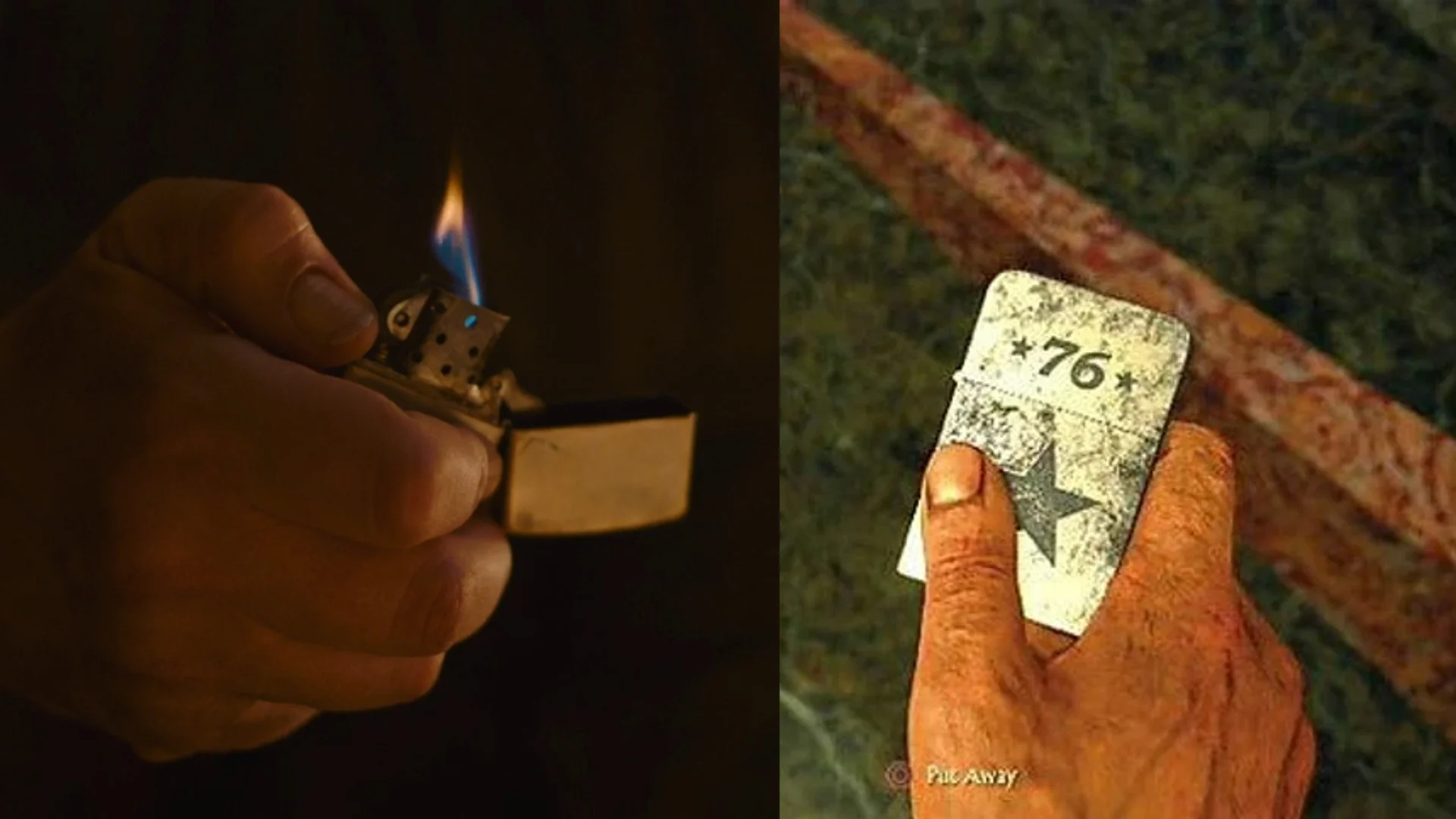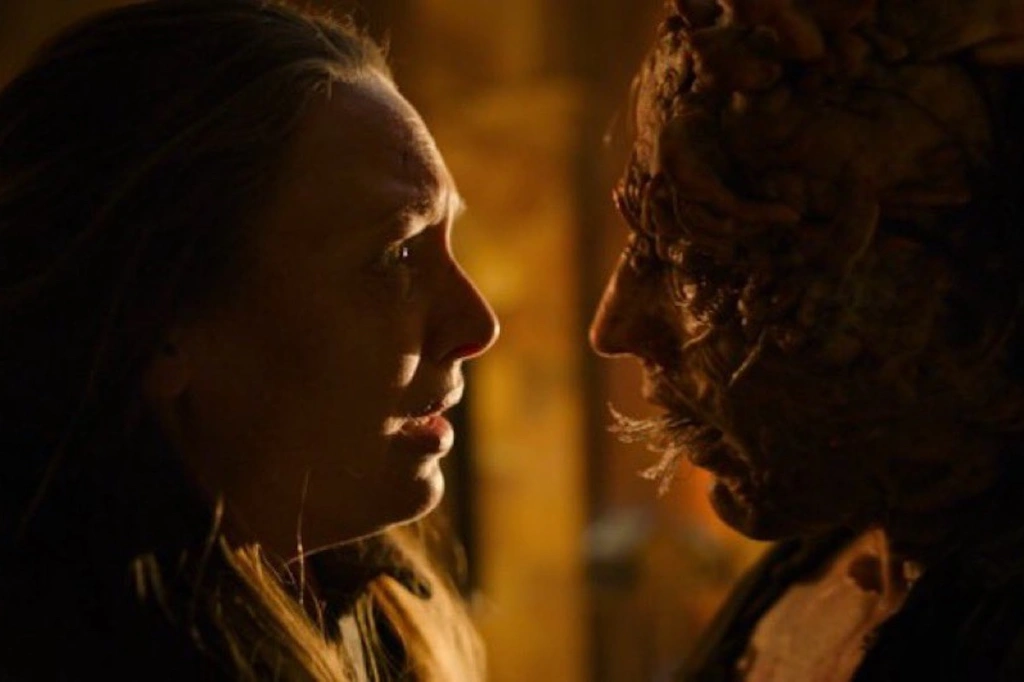Welcome back to our continuing coverage of HBO’s new television series, The Last of Us, starring Pedro Pascal and Bella Ramsey.
After a solid performance in its pilot episode, The Last of Us steps it up appropriately for the second episode, with improved dialogue writing, more character moments between Joel and Ellie and, thankfully, special effects that justify all the money clearly dumped into this project.
As per usual, there are some hiccups – but I am cautiously satisfied with this episode. So let’s get into the recap!
Also, if you want more analysis, check out Bo’s piece right here at the Fandomentals!
SPOILERS for the show through episode 2 and for the game through the content covered in episode 2
The Last of Us: Episode 2 “Infected” Summary
The episode opens in 2003 Jakarta, Indonesia, which we know from dialogue in the first episode is where this mysterious fungal infection began. Dr. Ibu Ratna (Christine Hakim), a specialist in fungus, is brought to examine the corpse of someone newly infected. Dr. Ratna inspects the corpse’s mouth, where she finds fibrous growths that appear to still be alive.

Dr. Ratna is asked by government officials how they can make a vaccine. She is very clear: there is no vaccine for this. She advises they bomb the city and wipe it out, including herself and her family, to prevent the spread. In less than seven minutes the writers managed to characterize this woman way more than any one-appearance side-character can hope for.
Cut to the “present day” story, Joel and Tess stand vigil over Ellie, keeping that good six-feet distance. Joel expects Ellie to turn into a zomboroni, due to her bite, but Tess is beginning to believe Ellie is actually immune. Ellie reveals that the Fireflies want her at a base out west so that doctors can study her and make a cure. Joel scoffs at this idea – he’s heard it a hundred times before. But Tess believes Ellie, and so the three head off towards the next meet-up location.
The dialogue writing in these travel scenes is very good, giving Bella Ramsey space to breathe as Ellie and really come into that character. While Joel is more sidelined in the dialogue, Pedro Pascal gives several moments of lingering, far-off stairs into the middle distance to compensate and keep him connected. The balance is more in Ellie’s favor, but for this episode, the two work well together in tandem: an important requirement for this story’s shelf-life going forward.
Tess exposites a bunch of world-building for the audience as they travel – she gets us Ellie’s exact age of 14, she tells us about how they did, in fact, bomb the cities, and she provides further details on how the zombies function. In this iteration of The Last of Us, the undead are connected by underground fungus fibers so that alerting a zombo in one area could alert a whole lot more in another area. And then they swarm!

Gamers will recognize immediately that this is new world-building provided for the show. And it’s really a great idea because it introduces an additional rule to the narrative that will make our characters’ journey more challenging. This is also a good science fiction concept because IRL fungus can spread over huge areas. I’m glad to see the show creators read more than one Wikipedia page about fungus before writing their scripts.
The Scooby Gang ends up taking a path through an old, definitely-not-dangerous-at-all museum. Joel inspects the fungus outside the museum: it is dried and desiccated, meaning that it cannot alert other distant fungus. Immediately inside Ellie discovers a (somewhat) fresh-looking corpse-o-roni, but she notes that it does not look like an infected attacked. Joel and Tess share an interesting bit of dialogue here – something about how “he” could’ve done it. Ellie asks who, but this question is not answered within the confines of this episode. Foreshadowing anyone??
On their way up the stairs, we hear what sounds like a BIG bad boy somewhere above – the steps are loud and cause the ceiling to cave in. While sneaking Ellie accidentally steps on an Extra Crunchy zombo hand but, since it’s all desiccated, it’s fine. Good visual storytelling, teaching me the new rules we just learned through dialogue! We love to see it!
Finally, upstairs, we are greeted by two very spooky zombie friends. Gamers will recognize these monsters as clickers, though they aren’t named in the show as of yet. Joel explains to Ellie that the clickers cannot see, but they can hear. The clickers stalk around the room screaming and ultimately discover the crew. The three of them scatter – Joel shatters some glass to draw a clicker away. Joel and Ellie almost get away, but then Joel accidentally steps on some of that shattered glass that the zombo hears. Joel then shoots it repeatedly until it dies.

To echo (hehe pun intended) what literally everyone thought while watching this sequence, the clickers looked awesome. The special effects really were fantastic. While I personally prefer the clicker design from the second game, I still very much appreciate their dedication to replicating the look of the clickers from the CGI screen to real-life makeup artistry. Kudos, good people, kudos.
Turns out during the scuffle, Ellie got bit AGAIN (what’re the odds?), but she’s fine because she’s immune. Good thing it was just her! Right? Right??
The Mystery Machine rolls on to the final location, the Capitol Building where they’re gonna meet the Fireflies, trade off Ellie, get their supplies, and go home to get a cold beer. But oh no! The plot said NAH bro, this is a father-daughter bonding story, Joel’s not done yet! All the Fireflies in the building are dead because, as Joel quickly explicates in about 3 seconds, one got bit, then bit others, then the healthy ones fought the sick ones and everyone died. Isn’t that just too bad!
Tess freaks out and reveals that she was bitten by one of the clickers (shock!). After his reveal, Joel accidentally alerts the fungus network to their presence and the horde of zomboronis they saw at the beginning of the episode starts charging towards their location. Tess begs Joel to take Ellie to the next savepoint – I mean, to “Bill and Frank’s” because they’ll “know what to do” or some such thing. Tess uses Ellie’s new bite – which is also healing normally – to convince Joel to save Ellie and run. Joel does just that and they get out of the building.
Tess, meanwhile, pours gasoline around the room. She waits for the zombies to come in before setting the place ablaze. Fortunately for the audience, Tess’s lighter read the script and knows the *exact* moment of best dramatic satisfaction to finally catch – so Tess must first suffer a horrible dementor-style kiss from a fungus person before exploding in a fiery inferno. Thanks, Neil.

Joel and Ellie look at the building. They are sad. We know because there is sad music. And that’s the episode!
Analysis: Genre Expectations and Nitty Gritty Details
Putting aside my sarcasm for just a moment, I did really enjoy this episode. It was even better on a second watch, IMHO. We want to see this exact type of improvement from the pilot: a solid, appropriate upward step up in dialogue writing, visual storytelling, and acting ability. This gives me (cautious and suspicious) hope for future episodes.
One important analytical structure we should start considering here is genre expectations. Media fits into different genres, or groups, depending on what kind of story you are telling. Science fiction is a genre, horror is a genre, and zombie apocalypse is a particular genre too. By nature of being part of a specific sub-genre, The Last of Us as a story will check off certain boxes. For example, as a zombie story, there will be an uncontrolled infection and an uncontrolled, overwhelming number of zombies. Without those things, The Last of Us wouldn’t be a zombie apocalypse story.
Writing within a genre has positives and negatives. And when it comes to adapting a video game that is in a genre, the hurdles get even more wonky. A positive of a zombie game, for example, is that if you’re a fan of other zombie games, you’re likely to enjoy this zombie game because all games in that genre share core tenets that you, the gamer, enjoy. Genre gives the consumer predictability in a good way.
However, genre also limits the story a lot so that it is predictable. Like in this episode – oh no, did one of our side characters who we’re just getting to know and love get bitten by a zombie? Who would’ve thought! Surprise, wow!

In order to make a story unique within a genre, writers can try to subvert the viewers’ expectations. I think a lot of what The Last of Us has done right so far – and what it has the potential to do later on – is basically mess with the audience’s expectations. There are three good examples of this in Episode 2.
One, when Ellie steps on the Extra Crunchy zombo hand in the museum. As soon as they entered the museum, I thought, “Ellie’s gonna be the one to step in the wrong place and make everything bad, cuz she’s the rambunctious kiddo,” and within minutes there she was, making extra crunchy noise. However, the narrative didn’t do the easy thing: it didn’t make the clickets hear that, or have any zombies react to that at all. Ellie stepping on the hand made no difference. In fact, it was the Adult ™ Joel who, twice in this episode, stepped in the wrong place and alerted the zombos. That is a subverted expectation in this genre: that the innocent kid is the one to haphazardly cause problems.
Two, the people in this show are not good-looking. And I don’t mean that as an attack on any of the actors – I mean that as a compliment to the makeup and costume departments. Joel, Tess, and Ellie look super rough. Like, they are not having their sexy post-apocalypse moment. Making your main characters look like they’ve been physically ground into the dirt is a direct undermining of genre expectations for science fiction, horror, and especially horror video games. This is uniquely true for women who, in the history of horror games, are always either beautiful, sexualized, or literally your dead wife.

Science fiction suffers from this too. Pull up any episode of Star Wars or Star Trek, and you can find some sexy aliens and beautiful young ensigns. Hell, James Cameron’s Avatar: Way of the Water was just sexy blue aliens in the ocean. Don’t try to convince me otherwise.
I particularly like this subversion of genre expectations because it takes advantage of the visual medium, not just the writing and narrative. I’m curious to see how this develops over the season, and in subsequent seasons.
Third, there’s a general expectation in stories at large that your protagonist is good. The Last of Us is trying to make us question whether Joel is good – indeed, Tess literally said in dialogue “We are not good people.” Not much else on screen has supported this proclamation; but I want to see where this goes. One of my criticisms of the game is that Joel never was morally grey to me, even though that seemed to be what the game wanted me to think. But alas! We’ll revisit this issue with more information I’m sure.
In other news, the award for Greatest Dramatic Satisfaction of Episode 2 goes to: Tess’s lighter! Woo!

This whole thing with the lighter not catching until just the right moment was silly. It was unnecessary – the scene was already dramatic, we didn’t need the fake tension of a malfunctioning lighter. Also, we had no information on this lighter to indicate it wouldn’t work. There could’ve been a quick line earlier in the episode about it not working if they really wanted to do this; but honestly, the scene didn’t justify itself or make sense with Tess’s character.
We’ve seen Tess be competent and smart and tough up to this point. Tess wouldn’t want to burn to death in a fiery inferno. It would make more sense if Tess set the trap, ran away or up the stairs or something, and threw the lighter from a distance. Then, after making sure the zombies were all dead, she could kill herself some other way before turning.
Instead, Tess is suddenly frozen – scared? Shocked? Some emotion? I have no idea. This woman would never be so frightened by the infected that she freezes in place, no way. So it was all just a little overdramatic for no narrative purpose, and actually undermined Tess’s established character just so we could see the creepy dementor’s kiss.

While we’re on the subject of Tess, they imply in this episode that Tess had unrequited feelings for Joel. It was definitely implied in the last episode that the two were sexually involved. This is not something present in the game (from my recollection), and I don’t think it adds anything here. It actually kinda simplifies Tess. She’s helping Joel because she loves him? The one adult woman in a narrative being the love interest is back to basics for storytelling. Tess is far more interesting if she is Joel’s platonic smuggling partner, especially since the “romance” was given literally no screen time to exist anyway. Strong thumbs down on that one.
A few more minor notes – the echo-location power of the clickers was not explained visually or in dialogue. Gamers obviously know this, but non-gamers do not. They could of course fix this in subsequent episodes. It needs to be explicated.
Speaking of things that need to be explicated, I’m still on broken-watch watch. Joel’s got that broken watch. He’s wearing it. Can someone please talk about it in the dialogue?? Or some additional visual storytelling?
I’m still confused about what was the big bad boy in the museum. Something heavy and ominous was making the ceiling cave in at the top of that building – and yet after fighting the clickers, our happy troupe gets out from the topmost floor unscathed. Confused? Me too!
And as a last stylistic complaint, we had a lot of shaky camera in this episode. Shaky cam can be useful, for example, if your characters are running or panicking etc., to convey emotion on screen. But there was shaky cam when the three were just walking on a bridge. Please, hold the camera still. You have a beautiful cityscape to show us, and I want to see it without wiggling all over the place!
Also kudos to the music department. The music in this episode is an improvement from the pilot. Ending on a recognizable song from the video game was a nice touch. I especially liked the use of sound and silence when Joel was re-loading his gun in the room with the clickers.
In sum, episode 2 definitely made improvements from the pilot and gives me hope for future episodes. Like all media, it isn’t perfect, but this was a good episode of television! For the reasons stated above, on my completely arbitrary and subjective rating scale, I give “Infected” a 7.25 out of 10.
Images courtesy of HBO Max
Have strong thoughts about this piece you need to share? Or maybe there’s something else on your mind you’re wanting to talk about with fellow Fandomentals? Head on over to our Community server to join in the conversation!

